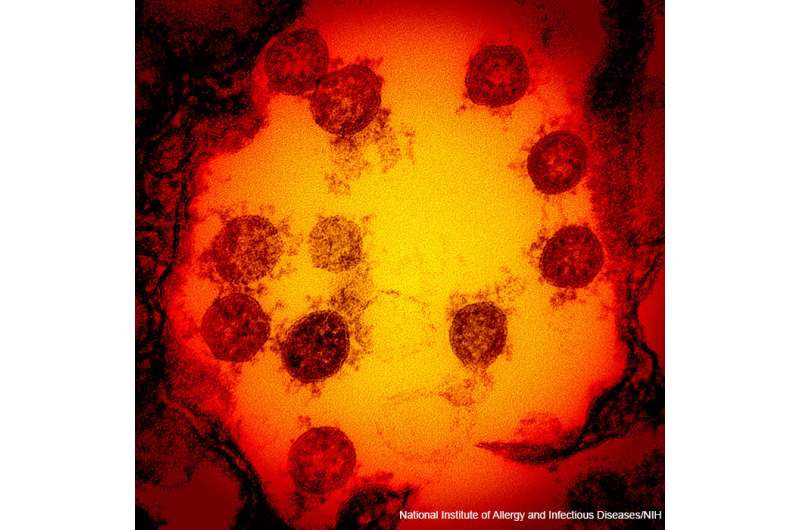Study explains multipronged SARS-CoV-2 attack and widepread COVID-19 infection

A study of a gateway receptor for SARS-CoV-2 led by Walter Lukiw, Ph.D., Professor of Neuroscience, Neurology and Ophthalmology at LSU Health New Orleans' Neuroscience Center of Excellence and School of Medicine, may help explain the wide variety of symptoms and organs involved with SARS-CoV-2 infection and COVID-19. The results suggest that a multi-organ infection with SARS-CoV-2 may be via the angiotensin-converting enzyme 2 (ACE2) receptor, which is found almost everywhere throughout the body. The findings are published in the journal Cellular and Molecular Neurobiology.
To better understand the mechanism and pathways of SARS-CoV-2 infection and susceptibility to specific cell and tissue types as well as organ systems, the research team analyzed 85 human tissues for the presence of ACE2 receptors. ACE2 is a protein that is found on the surface of many immune and nonimmune cell types. An enzyme, it is part of the system that regulates blood pressure and fluid and electrolyte balance. It may also help regulate cardiovascular, neurovascular and renal function, as well as fertility. ACE2 receptors act like locks on cells, and the SARS-CoV-2 spike proteins act like keys that open the locks letting the virus enter cells to rapidly multiply. As well as controls, tissues tested included lung, digestive, renal-excretory, reproductive, eye tissues, and 21 different regions of the brain.
"Besides strong ACE2 expression in respiratory, digestive, renal-excretory and reproductive cells, high ACE2 expression was also found in the amygdala, cerebral cortex and brainstem," reports Dr. Lukiw. "This may help explain cognitive deficits associated with SARS-CoV-2 infection. Some of the highest ACE2 expression levels were found in the pons and medulla oblongata in the human brainstem, an anatomical region of the brain containing the medullary respiratory centers, and this may in part explain the susceptibility of many CoV-19 patients to severe respiratory distress."
The team further noted that ACE2 receptor activity was also easily detected in the eye, suggesting that the visual system may provide an additional entry point for SARS-CoV-2 invasion and that under certain conditions, eyeglasses or face shields may be as important as face masks in reducing SARS-CoV-2 transmission and infection.
"Several important research gaps remain," Lukiw concludes. "A real danger of SARS-CoV-2 infection is not only its highly transmissible and contagious nature and lethality, but also its simultaneous and multipronged attack on many human cell and tissue types involving vital and critical respiratory, immunological, vascular, renal-excretory and neural systems as well as an unprecedented coordinated disruption of the complex neurophysiology, neurochemistry, neurobiology and neurology of the cells of the brain and central nervous system (CNS) that normally regulate these multiple physiological systems."
More information: Walter J. Lukiw et al, SARS-CoV-2 Infectivity and Neurological Targets in the Brain, Cellular and Molecular Neurobiology (2020). DOI: 10.1007/s10571-020-00947-7




















